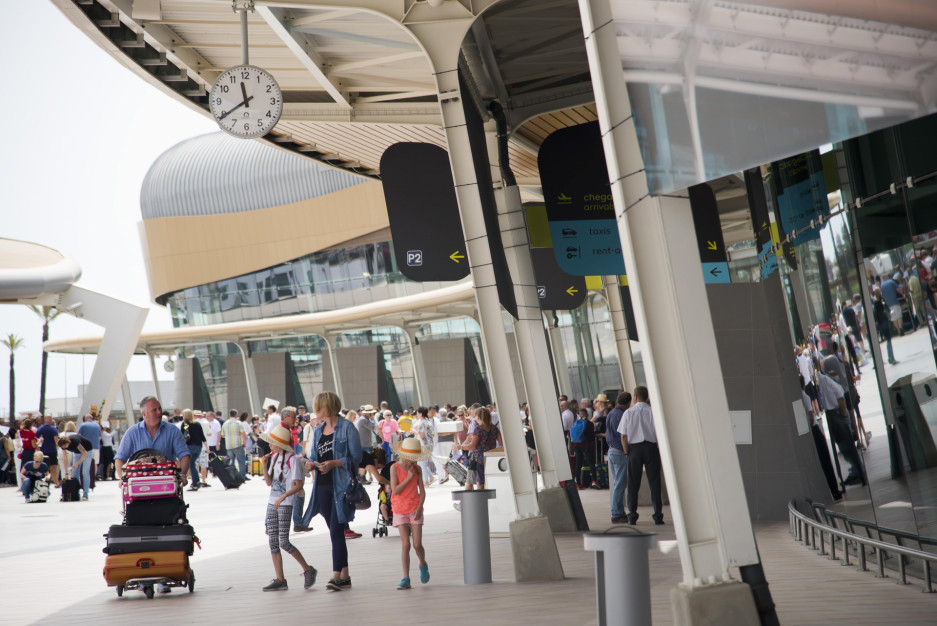
Positive Mobility
eMagPortugal: airports at the heart of the country’s tourism resurgence

After several years of recession, Portugal is now enjoying a return to growth. We explore this exceptional momentum.
The first impression visitors have when they set foot in Faro Airport is conclusive – a short stroll around the new retail area with its displays of Portuguese brands and products is enough to demonstrate the site’s fresh momentum. This energy is in perfect harmony with Portugal’s situation – after several years of recession, the country is now enjoying a period of economic growth and a buoyant job market. Supporting the country’s resurgence by stimulating air traffic is one of VINCI Airports’ core commitments. This challenge, which VINCI Airports accepted with its bid for the privatised Portuguese airports back in 2012, has since been met. Between 2012 and 2018, air traffic in Portugal grew by an extraordinary 50% and the country is attracting growing numbers of foreign tourists – a trend that looks set to continue.
New momentum for Lisbon
This new dynamism is particularly evident in Lisbon, where VINCI Airports has doubled traffic since it took over the concession, and was expected to reach 30 million passengers by the end of 2018. The teams successfully absorbed this growth by constantly improving their operating performance and optimising the airport’s existing capacity. To build on this momentum, in early 2019 VINCI Airports and the Portuguese government signed an agreement regarding the financing of an ambitious strategy for expanding Lisbon’s airport capacity.
The investment, amounting to over €1 billion, will further enhance Lisbon’s appeal as an economic and tourist hub.
It is very important to have an efficient infrastructure with competitive routes. Portugal is a hub between continents and this is a very important competitive advantage that together we help to promote further.
A dynamic network of 10 airports
To support and encourage this growth trend, VINCI Airports has unlocked the potential of all the airports in the Portuguese network by leveraging synergies between them and capitalising on their individual strengths. Porto Airport welcomes tourists joining the many cruises departing from the region as well as people looking for a weekend away and travellers on pilgrimage to the different religious sites. In early 2019, the ACI named Porto one of the leading airports in Europe in the 5 to 15 million passenger category. The passenger terminal has been reconfigured to support the growth in traffic (up 6.8% in 2018) while continuing to deliver impeccable service. Another example is Faro, gateway to the popular tourist region of the Algarve – this airport has also seen significant growth in passenger flows, leading to the creation of a brand new terminal. Another very popular Portuguese destination is Madeira. With over 3 million passengers using the island's airport in Funchal, an investment of €3.5 million was made to create a new 1,800 sq. metre commercial gallery, which was unveiled in 2016.

A partner to the Portuguese economy
VINCI Airports is strongly committed to supporting the country’s economy, rolling out a specific vision and plan for each of its airports. This individual approach is backed by cross-cutting initiatives that further enhance the sustainability of growth in the region. Innovation is one of the key drivers, whether in forging solid relations with local stakeholders or with organisations that attract international interest. For instance, in November 2018, Lisbon Airport hosted the Web Summit, a prestigious international event devoted to new technologies, for the third year running. VINCI Airports further demonstrates its desire to sustain Portugal's development through the actions it takes to foster societal and sustainable development, together with social integration initiatives for young people – a vision reflecting VINCI Airports’ long-term commitment to Portugal.
We have made it our priority to increase the number of workers with qualifications in tourism by 50% and to use tourism as an instrument to attract investors, students and new inhabitants.